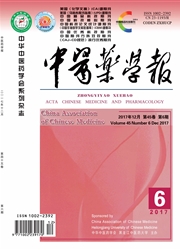

 中文摘要:
中文摘要:
从认知语言学概念隐喻理论的角度,以"湿邪"概念为例探讨了中医"六淫"概念隐喻。将中医"湿邪"的特征和致病特点与自然界之"湿(气)"的特征进行类比,认为中医"湿邪"概念的形成来源于自然界之"湿(气)"概念的跨域映射;进一步说明了中医"六淫"病因概念并非实体或具体概念,而是古人在"天人合一"的思想指导下,在身体体验的基础上根据人与自然界相似性的心理联想,不自觉地将自然界中的"风、寒、暑、湿、燥、火"等具体概念通过隐喻的认知手段跨域运用到病因领域而形成的抽象概念。中医"六淫"概念范畴经历了由真实病因向隐喻病因转变的历史过程,具有隐喻的认知特征。
 英文摘要:
英文摘要:
The paper discusses the "six evil" conceptual metaphor of Chinese medicine with the concept of "pathogenic dampness" as an example from the perspective of Conceptual Metaphor Theory of Cognitive Linguistics. According to a- nalogy between the feature and characteristics of "wet of nature" and "pathogenic dampness" of Chinese medicine, we think that the formation of the concept of "pathogenic dampness" has derived from cross -domain mapping of the con- cept of "wet of nature" . So it further illustrates that the etiologic concept of "six evil" is not entity or specific concept, but the abstract concept that formed by means of metaphor from the specific concepts of nature, which is according to the similarity of psychological association and in the physical experience basis. It is because that the ancient had the ideas of "harmony between man and nature", so they had used the similarity of psychological association in the basis of physical experience. The "six evil" concept of Chinese medicine has experienced historical process of transformation from true cause to metaphorical cause of diseases. It has cognitive features of metaphor.
 同期刊论文项目
同期刊论文项目
 同项目期刊论文
同项目期刊论文
 期刊信息
期刊信息
